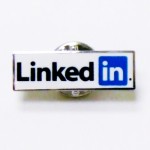Today’s guest post is from the irrepressible Elizabeth Case, a favorite marketing colleague and friend of mine and Principal at Yellow Dog Consulting, a sales and marketing firm in Issaquah, WA. She’s hilarious, knows marketing and loves dogs – all reasons why I adore her. Follow her on Twitter.
I had two client meetings the other day and BOTH mentioned “it takes 7 touches for someone to buy.” So I had a couple of great discussions about touch points with prospective clients – good touching and bad touching.
Remember, not all marketing touches are equal. Are you guilty of good or bad marketing touching? (Tweet this!)
Good Touches:
- Your Newsletter: it pops into their inbox monthly (hopefully not much more than that) and reminds them that you know what you’re talking about without nagging them to hire you (hopefully!)
- Social Media: Follow them/friend them/Link In with them and pay attention to what they’re saying. Don’t be creepy and like EVERYTHING they post, but keep an eye on them, and hopefully they do the same with you
- Email follow-up: if you met them at an event or workshop and you said you’d send them something, DO IT. Always follow up. “great to see you yesterday at the luncheon,” “here’s the link to that doggy daycare I mentioned,” it doesn’t have to be about work, and often times that’s better – be a resource to them, a.k.a, their new go-to person.
- Networking: Get out to the networking events where your clients and target market are gathering. Just the reminder that you’re alive and kicking is good for a lot of people. I need to see your face to be reminded you’re around. When I don’t see you, I can make assumptions you’re too busy for new clients. When you’re out and about, it’s good to know you may have time for new clients.
Bad Touches:
- Phone Calls after business hours: We all know this is my biggest pet peeve. If you’re having a busy day and need to call them, leave a voicemail! And I always suggest sending a follow up note. They may prefer one to the other, and you need to figure that out. I have many an un-returned phone call because I can’t call back when I hear the voicemail, but didn’t get an email reminder to say “hey call me friday at 2.” Their loss.
- Sales pitch emails: “Hey you should hire me, hey I’m really good at what I do, hey buy this.” No one likes that, you don’t like that, so don’t do it.
- Creepy Social Media: Don’t like EVERY POST or comment on everything, but if it genuinely is of interest to you, like it. Can’t wait to see how many of you now freak out on whether to comment on this post or are afraid I’ll think you’re creepy (I won’t this time!).
- The obvious sales pitch “coffee meeting:” Let’s be honest, you don’t want to learn about my business, you want to sell me on yours. Watch yourself when you call for the coffee meeting. That’s a BIG ask to leave your office- offer to be convenient to them if you want the business. I live in Issaquah about 15 miles east of Seattle. I don’t expect people to schlep out to the suburbs for me. So, I’m in Seattle a couple days a week and schedule all my meetings together. Make it convenient for THEM, not you.
Photo credit: Licked Lens Photography



